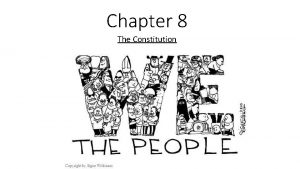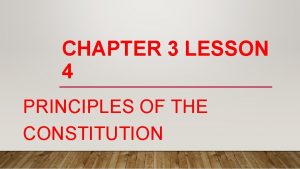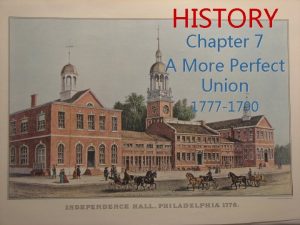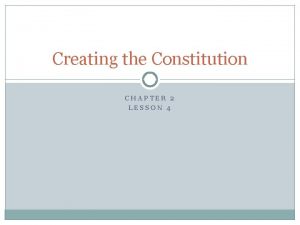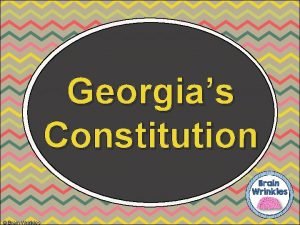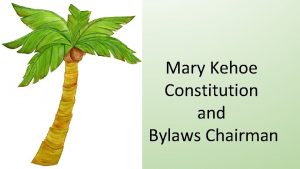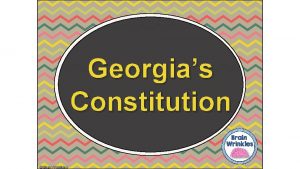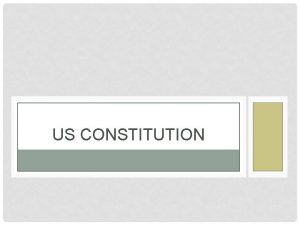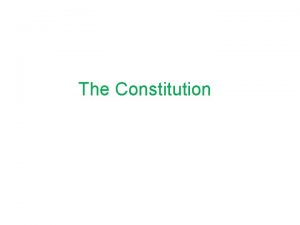CHAPTER 3 LESSON 4 PRINCIPLES OF THE CONSTITUTION







- Slides: 7

CHAPTER 3 LESSON 4 PRINCIPLES OF THE CONSTITUTION

CHECKS & BALANCES (C & B) • To keep one branch from becoming too powerful, the Const. has a system called C & B. • Under this system one branch has a say in what another branch of govt. does. • In your notes draw a diagram of the C & B chart on page 95.

POPULAR SOVEREIGNTY • What’s a representative Democracy? • A government where citizens elect others to be the government. • Popular Sovereignty: the peoples right to rule. • How is popular sovereignty shown in the US? • Elections

LIMITED GOVERNMENT (LG) • The govt. can only do what the people allow. • The Constitution limits the powers of the Federal and State govt. • The Rule of Law is where the law applies to everyone, including those who govern.

SEPARATION OF POWERS • To keep any one person or group from having too much power the Constitution divided the government into 3 branches. • What are their names? • Executive, Legislative, and Judicial • Each branch has its own job. • This is called Separation of powers

FEDERALISM • Powers are shared by both the Federal and State govts. Each govt. has independent authority over people.

TYPES OF POWER • Concurrent Powers: powers that • Enumerated Powers: powers both levels of govt. have at the that are listed in the Const. same time. • Reserved Powers: Powers that are not for the Federal govt, but given to the states: trade within their borders & schools. • What would be an example of a Concurrent Power? • Supremacy Clause: Laws and treaties made by the Federal govt. are the “supreme law of the land”.
 Lesson 1 principles of the constitution
Lesson 1 principles of the constitution Chapter 8 lesson 1 principles of the constitution
Chapter 8 lesson 1 principles of the constitution Lesson 4 principles of the constitution
Lesson 4 principles of the constitution Texas constitution vs us constitution
Texas constitution vs us constitution Nc constitution vs us constitution
Nc constitution vs us constitution Constitution what is constitution
Constitution what is constitution Chapter 7 lesson 2 forging a new constitution
Chapter 7 lesson 2 forging a new constitution Chapter 2 lesson 4 creating the constitution answer key
Chapter 2 lesson 4 creating the constitution answer key

